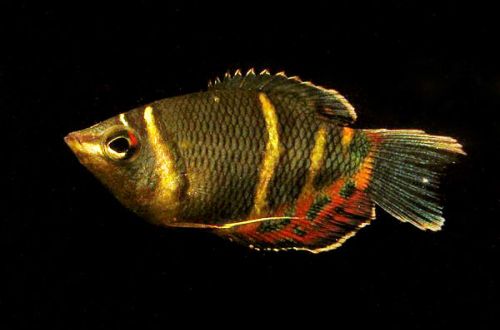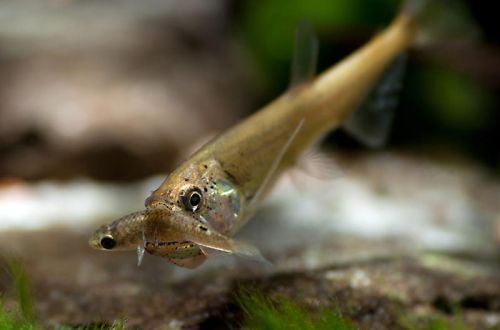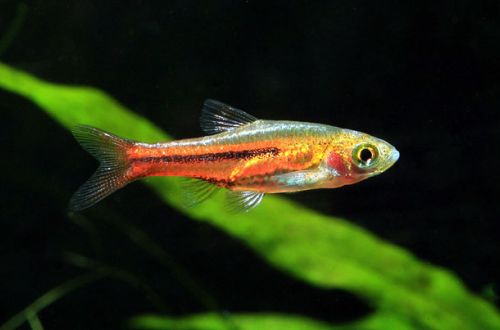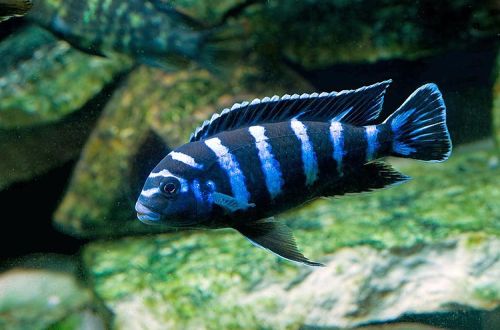
Pseudotropheus Demasoni
Pseudotropheus Demasoni, scientific name Chindongo demasoni, belongs to the Cichlidae family. A relatively new species in the aquarium hobby, it has only been commercially available since 1994. From that moment until the reclassification in 2016, it was referred to as Pseudotropheus demasoni. Despite its late appearance in the aquarium hobby, it has become very popular among Malawian cichlid collectors and specialists. Not recommended for beginner aquarists due to compatibility issues with other fish.

Contents
Habitat
Endemic to Lake Malawi (another name for Nyasa) in East Africa, washing the three states of Malawi, Mozambique and Tanzania at once. It lives near the Tanzanian coast in the region known as the Pombo Rocks. Found in shallow water and almost never in open water.
Brief information:
- The volume of the aquarium – from 200 liters.
- Temperature – 24-28°C
- Value pH — 7.6–8.8
- Water hardness – medium to high hardness (10-25 dGH)
- Substrate type – sandy
- Lighting – moderate
- Brackish water – no
- Water movement – weak, moderate
- The size of the fish is 10–12 cm.
- Nutrition – plant-based food
- Temperament – aggressive
- Keeping in a harem with one male and several females
Description
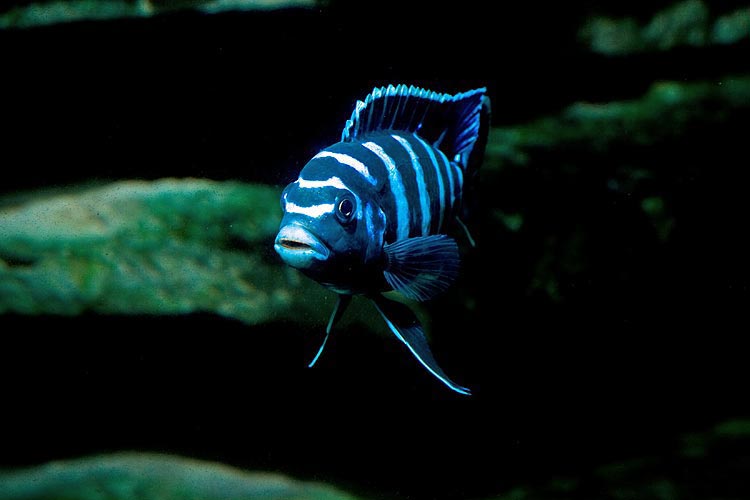
One of the smallest Mbuna. Adult fish reach a length of about 7 cm. Sexual dimorphism is weakly expressed. Males and females are almost identical. The color is bright, consists of alternating stripes of dark blue and light blue.
Food
In nature, they feed on algae growing on the surface of stones, and various microorganisms that live on them. In a home aquarium, plant-based food should be fed with a minimum inclusion of protein foods. The best option is to use specialized food for Malawian cichlids.
Maintenance and care, arrangement of the aquarium
The recommended aquarium size is at least 200 liters. The design uses a sandy substrate, large stones and fragments of rock, from which crevices and grottoes are formed. As a shelter, it is allowed to place decorative objects that allow the fish to hide, as well as ordinary ceramic pots, hollow tubes, etc.
When keeping Pseudotropheus Demasoni, it is important to ensure suitable hydrochemical parameters and high water quality. The latter is achieved by installing a productive filtration system and regular cleaning of the aquarium. Of key importance is also the weekly replacement of part of the water (15–20% of the volume) with fresh water.
Behavior and Compatibility
Aggressive and territorial look. First of all, this applies to males. Demasoni is able to attack even fish that are much larger than him in size. Two methods of content are considered acceptable. The first is when one male is in the company of several females. Other males must be excluded, otherwise skirmishes are inevitable. The second way, on the contrary, involves a crowded aquarium, where other Mbuna of a different color should be kept. In this case, the aggression of the alpha male will be sprayed.
Breeding / breeding
Breeding is possible in the artificial environment of the species aquarium. It is necessary to provide several flat stones at the bottom as potential spawning grounds. With the onset of the mating season, the male digs a hole at the bottom or chooses the same flat stone and proceeds to courtship. When the female is ready, she swims up to the male and releases several eggs in turn, and after fertilization immediately picks them up in her mouth. Further, the entire incubation period will take place in the mouth of the female. This offspring defense mechanism is unique to many fish from Lake Malawi.
Fish diseases
The main cause of most diseases in Malawian cichlids is inadequate housing conditions and poor quality food, which often leads to such a disease as Malawi bloat. If the first symptoms are detected, you should check the water parameters and the presence of high concentrations of hazardous substances (ammonia, nitrites, nitrates, etc.), if necessary, bring all indicators back to normal and only then proceed with treatment. Read more about symptoms and treatments in the Aquarium Fish Diseases section.



